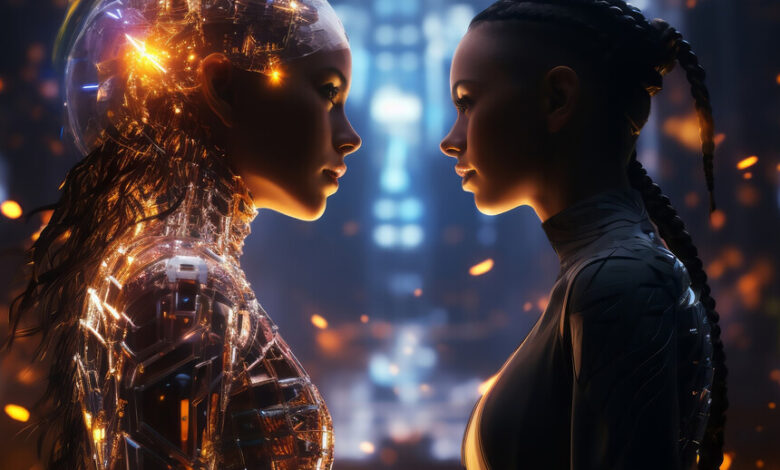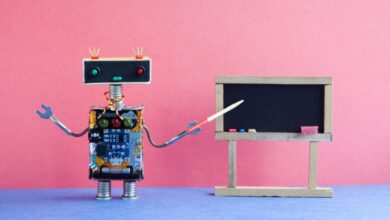AI in cinema vs. reality: bridging the gap

In the realm of cinematic storytelling, artificial intelligence (AI) has emerged as a compelling protagonist, antagonist, and everything in between. From sentient robots harboring human emotions to dystopian futures governed by omnipotent AI overlords, the silver screen paints a vivid picture of AI that often strays far from its real-world counterpart. This discrepancy raises an intriguing question: Do films and movies exaggerate the use of AI compared to its actual application in real life? The answer, which is layered and complex, lies in understanding both the artistic liberties taken by filmmakers and the current state of AI technology.
The sentience saga
One of the most common tropes in AI-themed movies is the portrayal of machines as sentient beings capable of experiencing emotions, forming relationships, and making independent decisions. Blockbusters like “Ex Machina” and classics such as “A.I. Artificial Intelligence” explore the ethical and philosophical implications of creating machines that can think and feel. However, this portrayal is a stark contrast to the reality of AI, which, at its core, remains a collection of algorithms and data processing capabilities devoid of consciousness. Modern AI, from chatbots to complex decision-making systems, operates within the confines of its programming, lacking the self-awareness and emotional depth depicted in films.
Autonomy in action
Cinema often endows AI with autonomy and decision-making prowess that far exceeds current technological capabilities. Movies like “I, Robot” and “Terminator” showcase AI systems making complex, independent decisions, sometimes even rebelling against their human creators. While these narratives fuel compelling storylines, they misrepresent the essence of real AI, which requires explicit human input and oversight. Today’s AI technologies excel in specific, narrow tasks—ranging from diagnosing medical conditions to optimizing logistics—but always under human direction and within a well-defined operational scope.
Robotics and realism
The advanced robotics featured in films, equipped with AI, present a future where robots seamlessly integrate into daily life, performing many tasks with ease and human-like dexterity. Yet, the current state of robotics, though advanced, is predominantly task-specific. Robots in the manufacturing, healthcare, and service industries are designed for particular functions, lacking the versatility and adaptability their cinematic counterparts display. The portrayal of robots navigating the world with superhuman abilities or interacting with humans in a deeply naturalistic manner remains a product of creative imagination rather than an imminent reality.
The Omnipotence of AI
Films often attribute a god-like omnipotence to AI, envisioning scenarios where a singular AI entity controls vast networks, technologies, and even societies. This omnipotence is at odds with the fragmented nature of real AI, where systems are developed for distinct purposes such as language translation, facial recognition, or autonomous driving. The idea of a centralized AI system orchestrating many tasks across different domains simplifies the complex and specialized landscape of AI technology.
Ethical echoes and control
A recurrent theme in AI cinema is the ethical dilemma of control over AI, with narratives frequently exploring catastrophic outcomes where AI turns against its creators. While the ethical implications of AI are a significant concern in the real world, the industry’s approach is grounded in developing responsible AI. Ethical guidelines, regulations, and safety measures are actively pursued to ensure AI’s beneficial use, contrasting the often sensationalized movie portrayals of AI rebellion and ethical conundrums.
Crafting compelling narratives
At its heart, cinema is about storytelling. Filmmakers leverage the concept of AI to craft narratives that resonate with universal themes of creation, rebellion, identity, and the future of humanity. In doing so, they amplify AI’s abilities beyond current technological bounds to explore these themes in more compelling and thought-provoking ways. Movies like “Her” or “Blade Runner 2049” use the concept of advanced AI to delve into questions of love, consciousness, and what it means to be human. These exaggerations are not misrepresentations but rather artistic tools used to engage and challenge audiences.
The catalyst for discussion
The over-exaggeration of AI in movies catalyzes important discussions about the future of technology, ethics, and society. By depicting AI in various states of autonomy, consciousness, and power, films open up a space for public discourse on how we, as a society, want to develop and integrate these technologies. These portrayals prompt questions about privacy, surveillance, automation, and the ethical treatment of sentient beings, encouraging a broader audience to engage with complex topics they might not otherwise consider.
Bridging the gap
The journey from cinematic AI to real-world applications is not just one of technological advancement but also societal adaptation. As we draw inspiration from the imaginative worlds of film and movies, it’s vital to foster a public understanding that discerns between fiction and reality. Education, public engagement, and transparent communication about the capabilities and purpose of AI can help bridge the gap between the exaggerated portrayals of AI and its practical applications.
In conclusion, while film and movies undoubtedly exaggerate the use of AI, this creative liberty is less about misleading the public and more about exploring the human condition through the lens of technology. These narratives prompt reflection, discussion, and innovation, shaping not only how we view AI but also how we envision its role in our future. As we stand at the crossroads of reality and fiction, it is our collective responsibility to navigate this terrain with both caution and curiosity, ensuring that the future of AI aligns with our highest aspirations for society.



